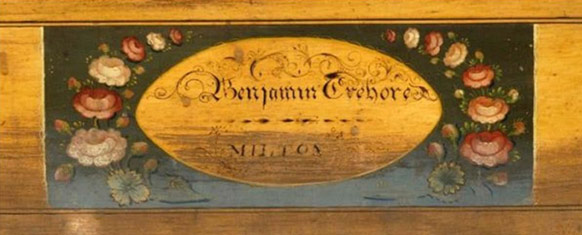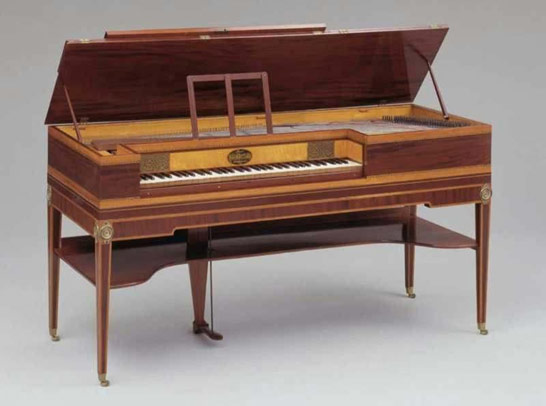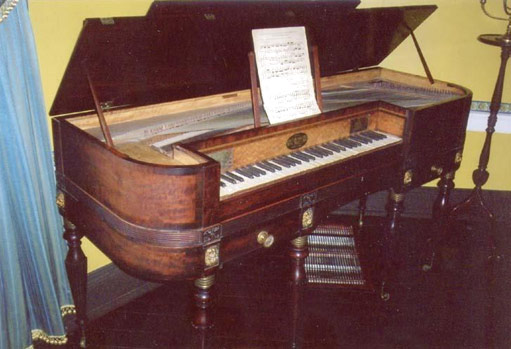Square pianos started coming into America while it remained a colony of Great Britain, mostly imported by wealthy individuals who had purchased them in London for their homes in the colonies. Importation declined but was not entirely stopped during the revolution (1776-1783), though it was far easier to smuggle in smaller items than a pianoforte. The importation of pianos for resale only began after the successful conclusion of hostilities, and began to thrive in the late 1790s. John Jacob Astor was importing pianos for sale immediately after the war in 1783! These were usually made by Longman and Broderip and perhaps the odd Broadwood, though after 1795 a number of other makes would start to appear in the States as well. Clementi did a very vigorous business after the turn of the century here.
In addition to importation, a local trade in building was established in New York and Philadelphia. John Behrent built the first pianos in Philadelphia in 1775, with one Behrent reportedly at the Smithsonian in Washington. Charles Albrecht was building in the 1780s in Philadelphia as well, as seen below at the National Music Museum in Vermillion SD.

By the end of the 18th C several other large cities had a piano trade started, including Benjamin Crehore in Milton Massachusetts.

With the arrival of John Geib in America in the summer of 1797, a major builder from London was now on hand to begin a piano building tradition in numbers far exceeding the 10 to 12 instruments per annum from shops like that of Crehore. His first instruments, built in the Bowery in Manhattan, were copies of what he had been building for Longman and Broderip to a number in excess of 4000 instruments during his London period. Geib, through his sons Adam and John Jr., and later William, would be one of the largest suppliers in America through the early 1830s, and the company survived in name until 1870.

Used with permission of Museum of Fine Arts, Boston
The square piano held a certain fascination for early American buyers, and the grand size and shape was distinctly held as unattractive and undesirable. The country was caught in the thrall of egalitarian unity, and the grand would remain a sign of the elitist until well into the 19th C. For that reason it is possible to find early squares with some regularity, even though production in the States was slow to catch up to that in London and elsewhere.
The designs of square pianos in America closely followed that in London during the first quarter of the 19th C, with design features trailing the London tastes by a few months to a year or so. Pianos with six legs for instance seem to appear around 1808, while certain design such as the curved front corners are more commonly encountered in American pianos form the period of 1812 to 1815 than from London. Below is a Geib and Sons in the Sheraton style, circa 1813.

Although the Americans were loath to adopt the grand, they were not at all shy about fancy and colorful squares. Robert and William Nunns built for Dubois and Stodart of NY, and flights of fancy were given free reign!

|
